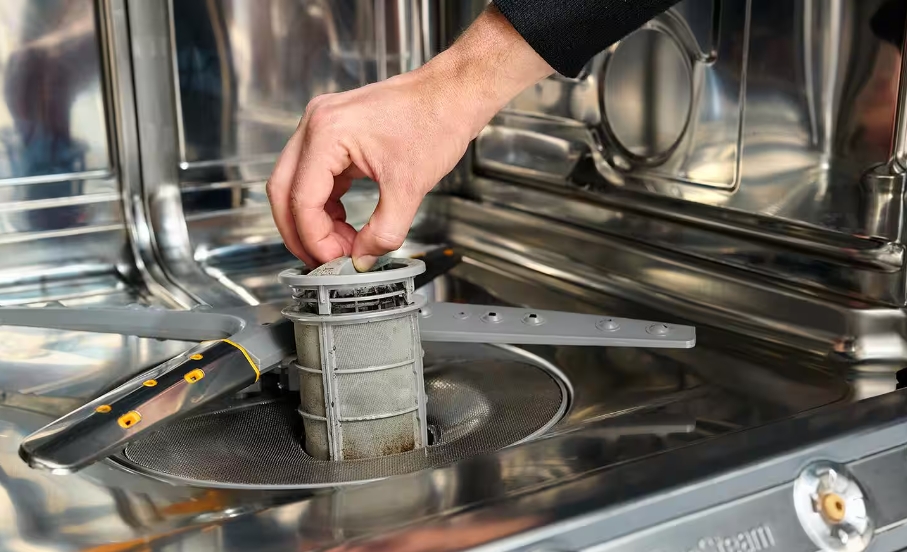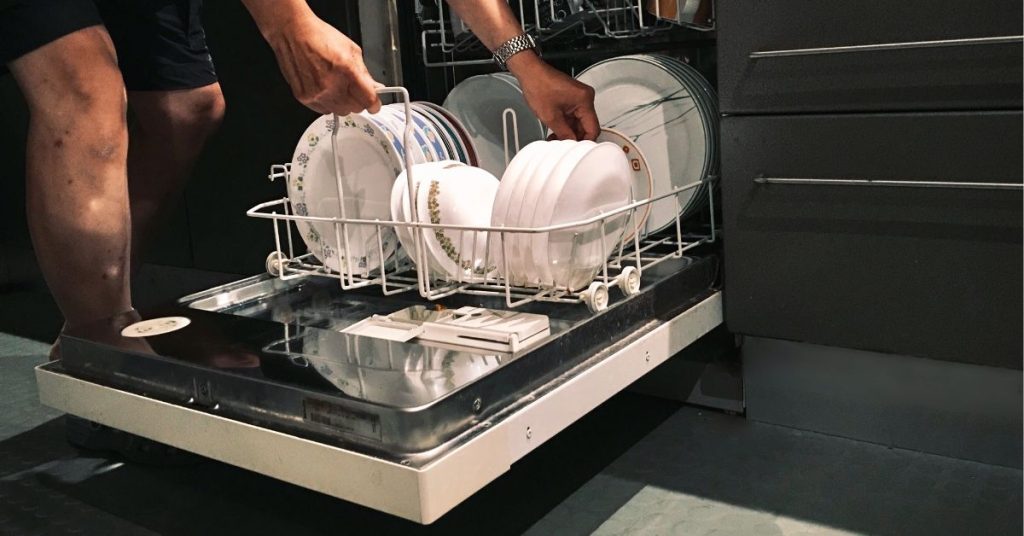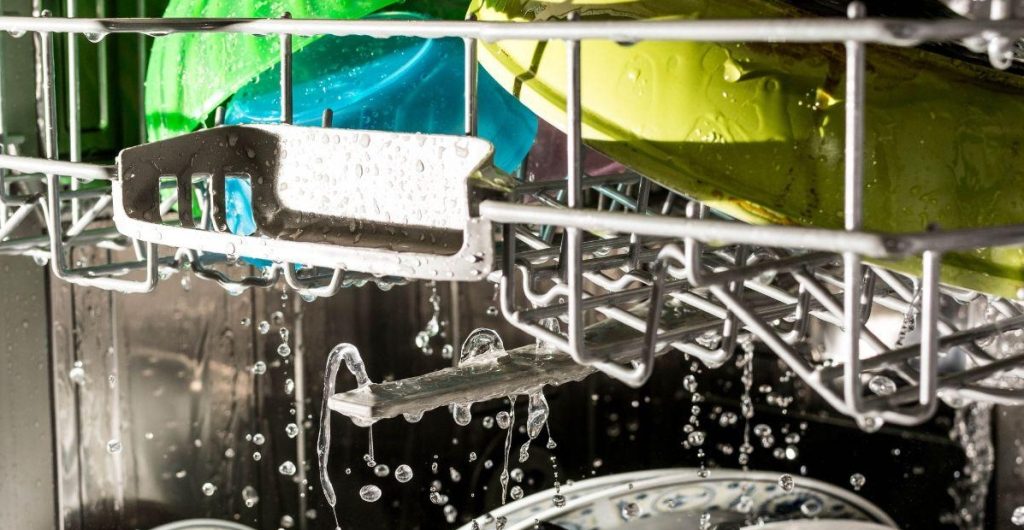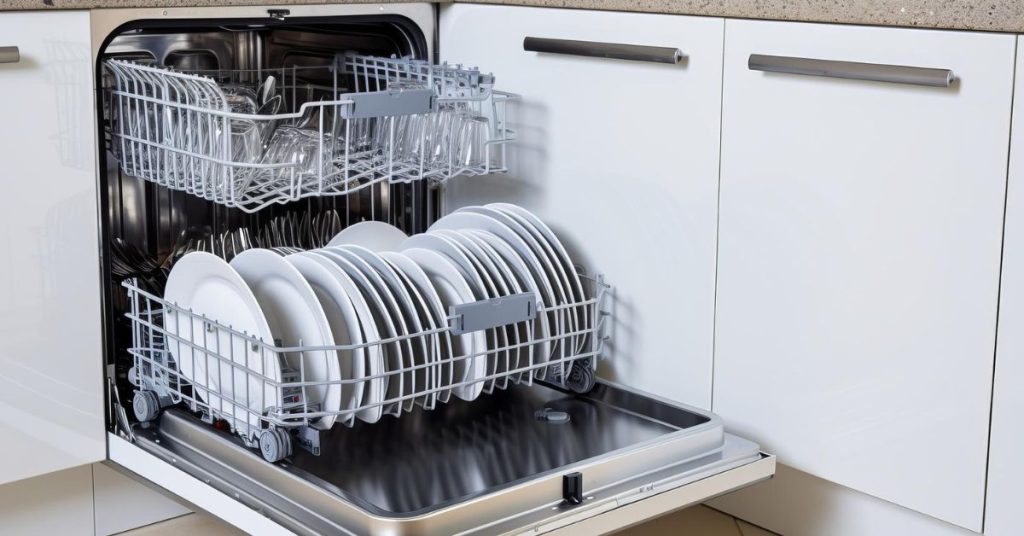Dishwashers do a lot of dirty work for us, so it’s important to return the favor by giving them regular cleanings. A well-maintained dishwasher not only runs more efficiently but also prevents bad odors and ensures your dishes come out spotless. If your dishwasher isn’t cleaning your dishes properly, it may be time to give it a good cleaning before considering repairs.
This guide will cover the steps for cleaning a dishwasher, from routine cleaning tips to how to clean the dishwasher filter.
How Often Should You Clean Your Dishwasher?
While some dishwashers are self-cleaning, most models still require manual maintenance to ensure optimal performance. How often should you clean your dishwasher?
Several brands recommend cleaning your dishwasher monthly, including the entire interior, door, gasket, and filter. However, if you only use your dishwasher occasionally or prewash your dishes, you may be able to clean it less often. On the other hand, if your dishwasher is used daily or heavily, you may need to clean it more frequently.
The key is consistency. Start by cleaning your dishwasher once a month, and then adjust the schedule depending on how dirty it gets. Regular cleaning will prevent grime, minerals, and grease buildup, which can impair your dishwasher’s performance over time (Consumer Reports).
Why is Cleaning Your Dishwasher Important?
Cleaning your dishwasher isn’t just about keeping it looking good; it plays a crucial role in ensuring it functions properly. Regular cleaning prevents a buildup of residue such as minerals, grease, and limescale, which can reduce the dishwasher’s efficiency and cause unpleasant odors. Over time, this could result in poor cleaning performance, like streaky glasses or dishes with leftover food. In some cases, failing to clean your dishwasher can lead to unnecessary repairs.
By regularly cleaning your dishwasher, you maintain its performance, prevent unpleasant odors, and extend its lifespan.
Cleaning Dishwasher Parts
Remove and Clean the Removable Parts
Start by removing the utensil holder and racks from your dishwasher. Wash or wipe these parts to remove any food debris. If you notice food is stuck, soak the parts in a sink filled with warm water and two cups of white vinegar for about 20 minutes. The vinegar helps loosen debris and acts as a natural cleaner. After soaking, rinse thoroughly and return the parts to the dishwasher.
How to Clean Your Dishwasher with Vinegar or Bleach
To clean the interior of your dishwasher, vinegar is a great option. Here’s how to use it effectively:
- Empty the dishwasher.
- Place one cup of white vinegar in a dishwasher-safe bowl and place it on the top rack.
- Run the hottest cycle without drying. Once the cycle is complete, open the dishwasher door to allow it to air-dry.
For additional cleaning, sprinkle baking soda on the bottom of the dishwasher and run a short cycle on the hottest setting to eliminate odors.
If your dishwasher has tough stains or mold buildup, you can use bleach. However, avoid using bleach if your dishwasher contains stainless steel parts. Add one cup of bleach to a bleach-safe bowl and run a full cycle without the drying cycle.
Tip: Never combine bleach with vinegar or baking soda at the same time (The Spruce).
Cleaning the Dishwasher Door and Gasket
The dishwasher door, especially around the rubber gasket, can accumulate grime and mold. To clean it, use an old toothbrush and a solution of three cups of hot water mixed with 1/2 cup of vinegar. Check your manufacturer’s instructions to ensure that vinegar is safe for your specific model. If the gasket shows signs of mold, use a dedicated cleaner designed for rubber seals (Good Housekeeping).
How to Clean a Dishwasher Filter
Many newer dishwashers come with self-cleaning filters, but if your model has a manual filter, cleaning it regularly is essential. Follow these steps:
- Unlock and remove the upper dishwasher filter.
- If your dishwasher has a lower filter, remove it as well.
- Inspect the filter area for any trapped food particles and clean it with a damp microfiber cloth.
- Wash the filter under warm, soapy water, scrubbing with a small brush if needed.
- Once cleaned, rinse thoroughly and place the filters back in position.
Check your owner’s manual for specific instructions related to your dishwasher model, as filter designs vary.
How to Clean a Dishwasher Drain
A clean drain is crucial for proper water flow. To clean it, mix one cup of white vinegar with two tablespoons of baking soda in a microwave-safe bowl. Heat the mixture in the microwave for 15-20 seconds, then pour it into the dishwasher drain. Let it sit for 10-15 minutes, then pour boiling water down the drain to flush it out. If your dishwasher is connected to a garbage disposal, make sure it’s also clean to avoid any drainage issues (Healthline).
How to Clean the Dishwasher Exterior
While cleaning the inside is essential, don’t forget about the outside! Wipe down the exterior of your dishwasher with a damp cloth and soapy water, then dry it with an old towel to keep it looking polished. For stainless steel models, use a specialized stainless steel cleaner to prevent smudges and fingerprints.
How to Clean a Smelly Dishwasher
If your dishwasher starts emitting unpleasant odors, it’s often due to food debris or blockages in the spray arms. Clean the spray arms by using toothpicks to clear blocked jets, and wipe down the interior of the dishwasher to remove debris. If the smell persists, repeat the cleaning process or run another cycle with vinegar to freshen it up.
Deep Cleaning Your Dishwasher
To perform a deep clean, begin by removing the bottom rack and taking out the filter and spray arms. Scrub the spray arms with warm soapy water and a toothbrush. For the gasket, use a mixture of water and vinegar, or opt for a steam cleaner to dislodge grime and buildup.
Some people prefer to use dishwasher cleaning tablets for quick cleanings. These can be used with or without dirty dishes, making them convenient for regular maintenance.
Lastly, clean the exterior of your dishwasher using a non-abrasive cleaner, making sure it’s sparkling and fingerprint-free.
Don’t Forget About Your Garbage Disposal
Because dishwashers and garbage disposals are connected to the same drainage system, it’s essential to keep both clean. Regularly clean your garbage disposal by running ice cubes and salt through it, which scrubs the blades and removes any buildup. Citrus peels also work wonders for freshening up both your disposal and dishwasher (The Spruce).
By following these steps, you can extend the life of your dishwasher, improve its performance, and ensure that your dishes always come out clean and fresh. Regular cleaning is a small investment of time that pays off by keeping your dishwasher in top shape.







